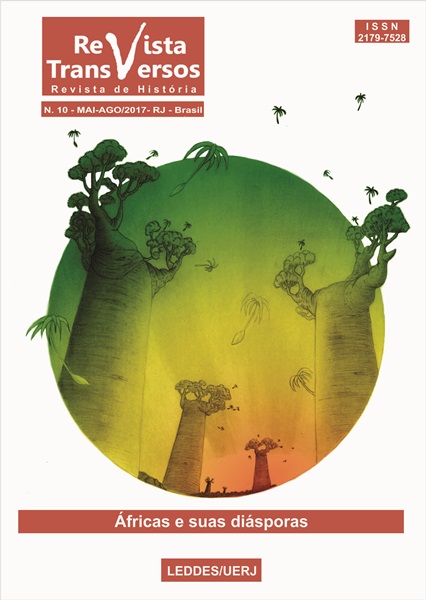PLANTAS DE LA DIÁSPORA AFRICANA EN LA AGRICULTURA DEL BRASIL
DOI:
https://doi.org/10.12957/transversos.2017.29994Resumo
DOI: 10.12957/transversos.2017.29994
This paper examines the plants of African origin that became central to subsistence and economy in the era of plantation slavery. Three centers of agricultural domestication in sub-Saharan Africa contributed to the diversity of plant resources that sustained millions subsequently swept into transatlantic enslavement. The establishment of these crops in the Americas occurred in plantation subsistence fields, dooryard gardens, and in agricultural plots of maroon communities.Emphasis is placed on African botanical knowledge and its expression in landscapes of bondage. These reflected the food preferences and cultural identity of the enslaved. In profiling the African plants established in the Americas, this paper seeks to correct a distortion in narratives of the Columbian Exchange, which remain centered on European agency, crops of Amerindian and Asian origin and Africa as a backwater of global plant transfers.
Downloads
Edição
Seção
Licença
Autores que publicam na Revista Transversos concordam com os seguintes termos:
- Autores/as mantém os direitos autorais e concedem à Revista Transversos o direito de primeira publicação, com o trabalho simultaneamente licenciado sob a Creative Commons Attribution-NonCommercial-NoDerivatives 4.0 International que permite o compartilhamento do trabalho com reconhecimento da autoria e publicação inicial nesta revista.
- Autores/as têm autorização para assumir contratos adicionais separadamente, para distribuição não-exclusiva da versão do trabalho publicada nesta revista (ex.: publicar em repositório institucional ou como capítulo de livro), com reconhecimento de autoria e publicação inicial nesta revista.
- Autores/as têm permissão e são estimulados a publicar e distribuir seu trabalho online (ex.: em repositórios institucionais ou na sua página pessoal) após o processo editorial, com a finalidade de aumentar o impacto e a citação do trabalho publicado. Neste caso, você deverá fornecer o crédito apropriado e um link do repositório original.



